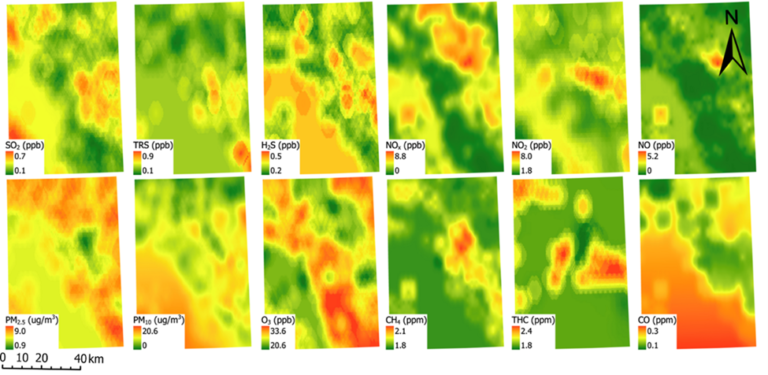Air Quality Impacts of Fracking
and Environmental Justice
Research Study #1: Modelling spatial & temporal variability of air pollution in an area of unconventional natural gas operations
- Assessing exposure to hydraulic fracturing is hindered by sparse air quality monitors.
- This study developed land use regression models using air quality data and oil and gas production data.
- We then used the models to predict ambient air pollution concentrations in northeastern British Columbia.
- These concentrations will be used to assess health outcomes and environmental justice.
Key Findings
- We were able to harness the available air quality data to build models capable of predicting at unmeasured locations using oil and gas activity data to explain the variations in concentration.

- The models were used to predict concentrations of 12 different gases and particles at the home location of health study participants and across the study area.

- The predicted air pollutant concentrations at cohort locations are comparable to concentrations measured by the air quality monitors.

- Minimal monitoring of pollutants with strong associations to fracking activities & several health impacts, such as BTEX compounds, highlights the need for additional monitoring of these species closer to areas of residence.
Please refer to the Environmental Pollution paper “Modelling Spatial & temporal variability of air pollution in an area of unconventional natural gas operations” for more details.